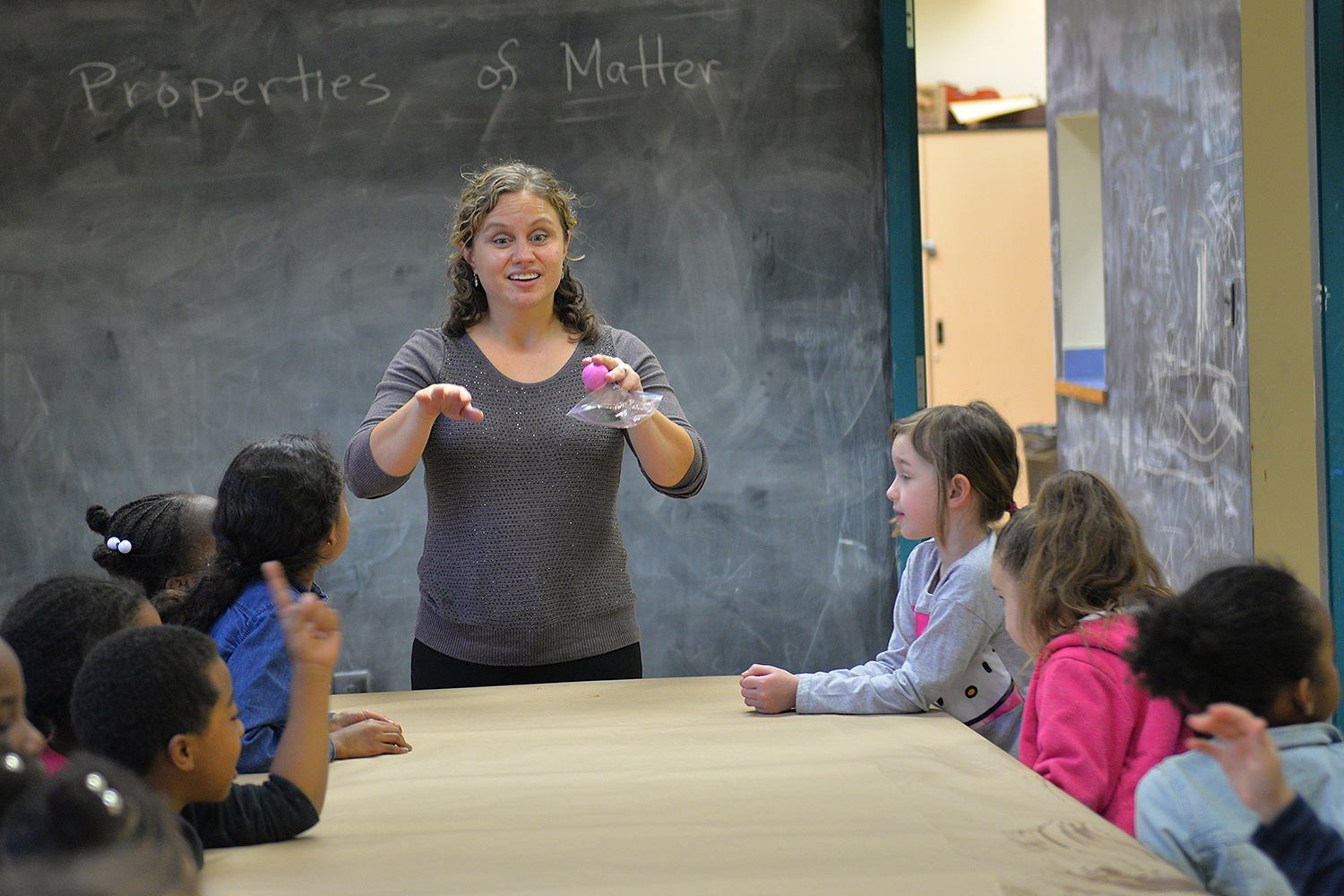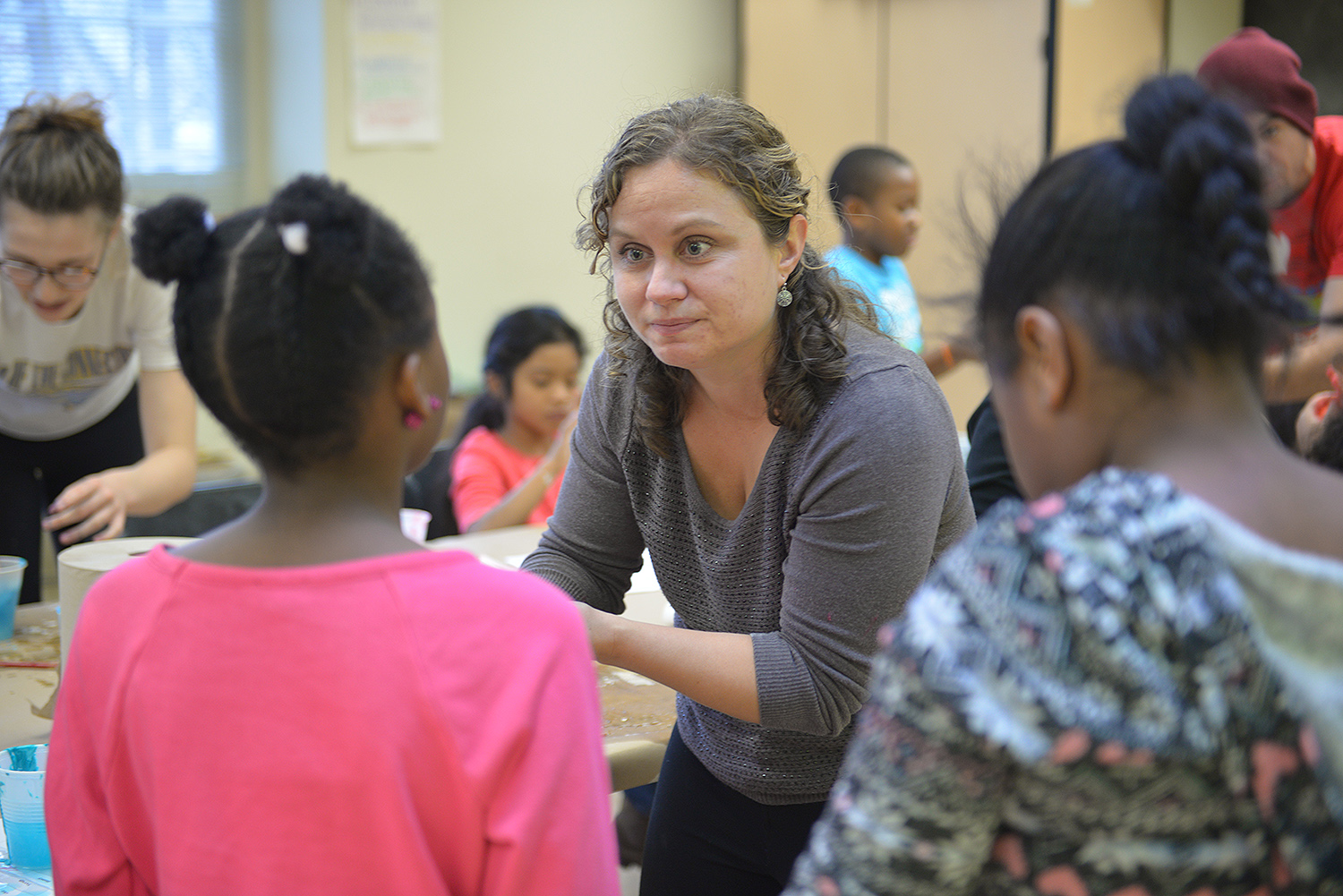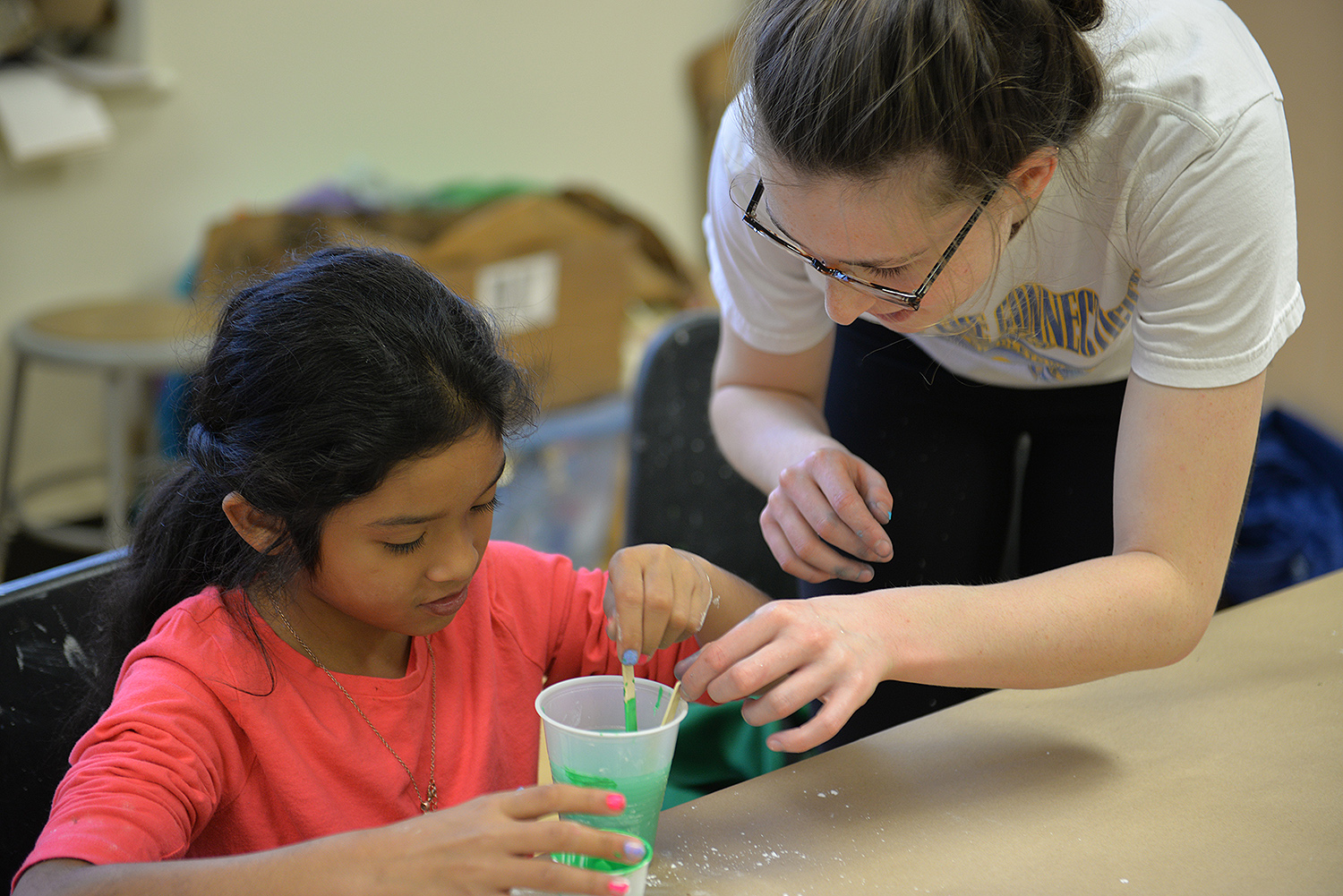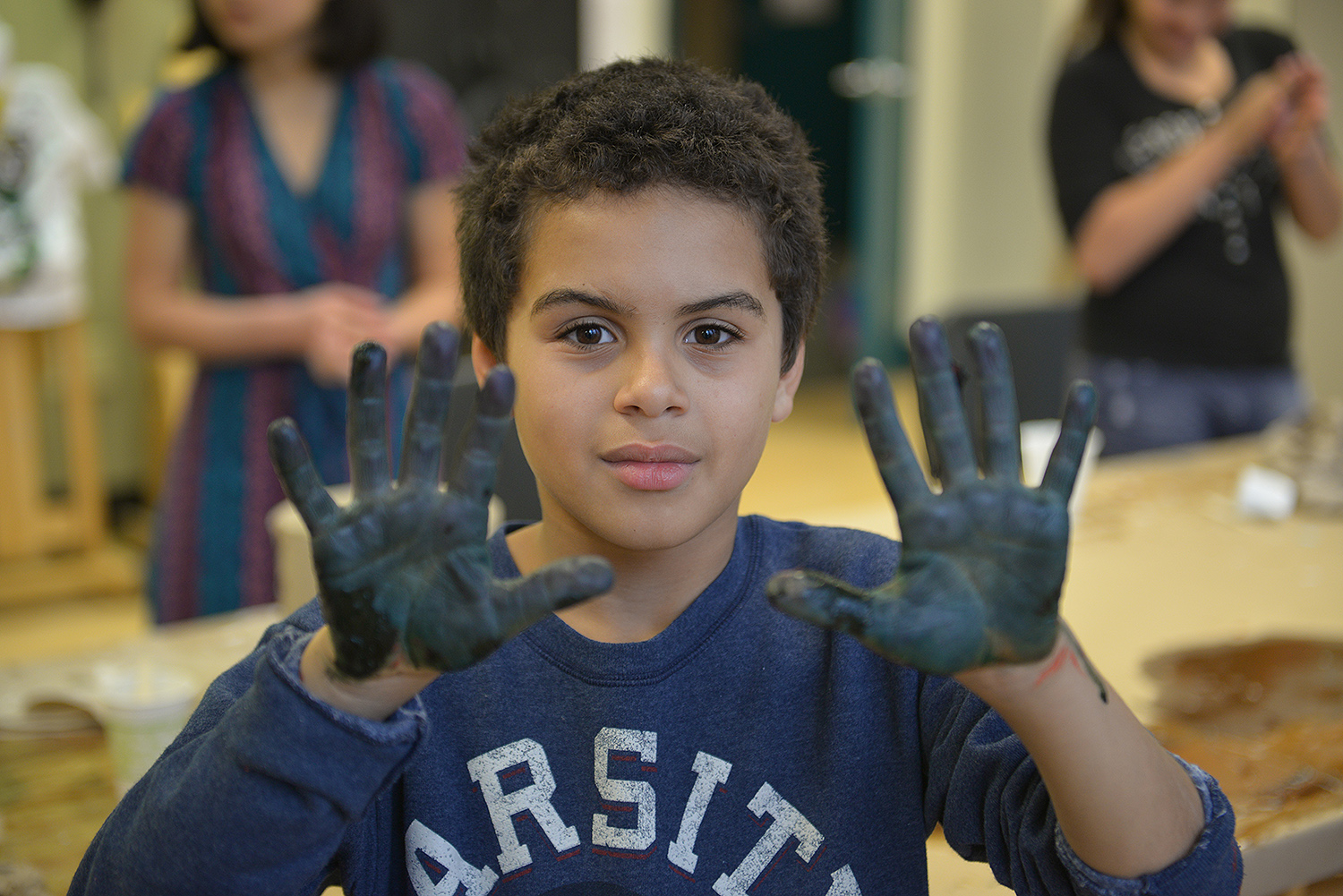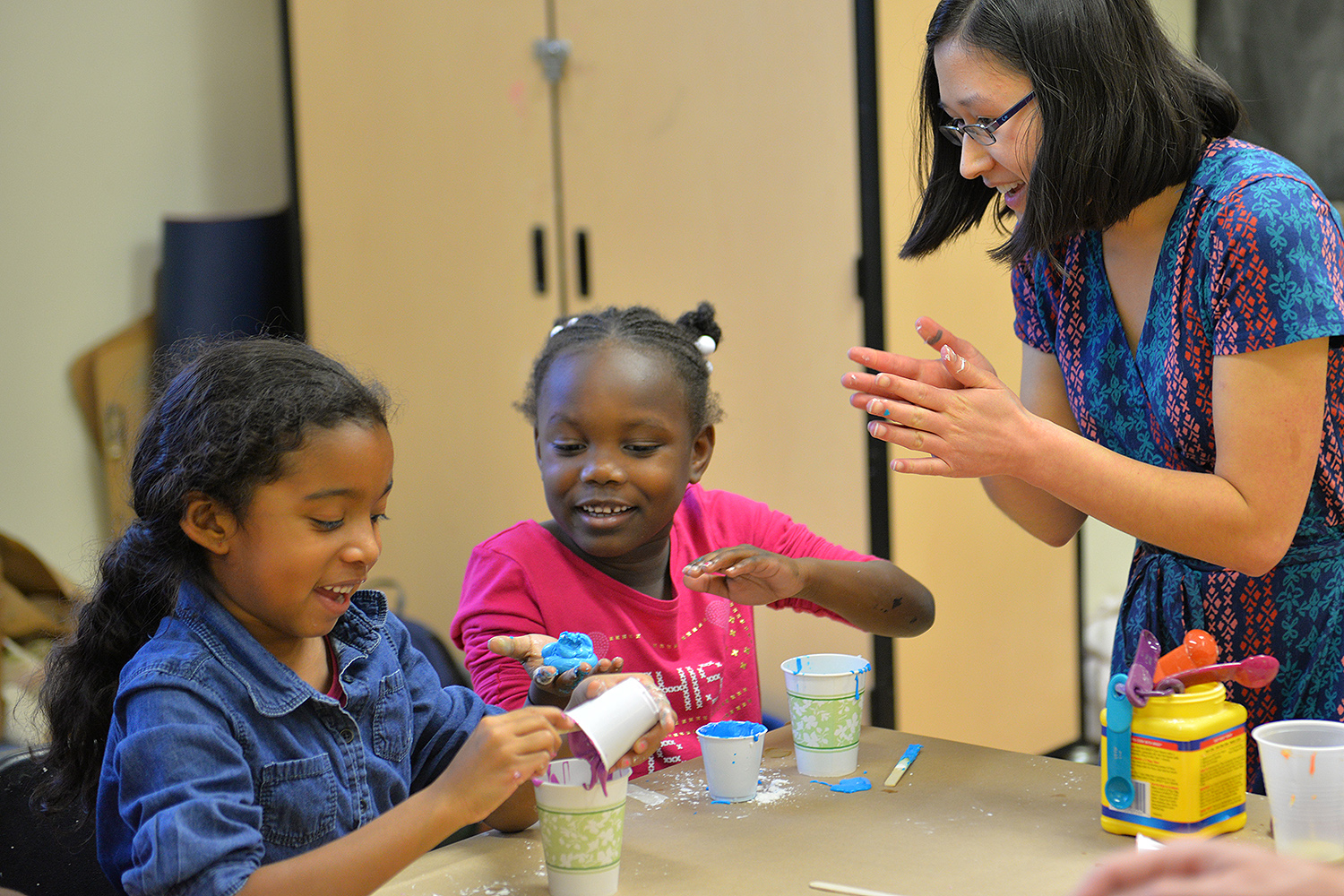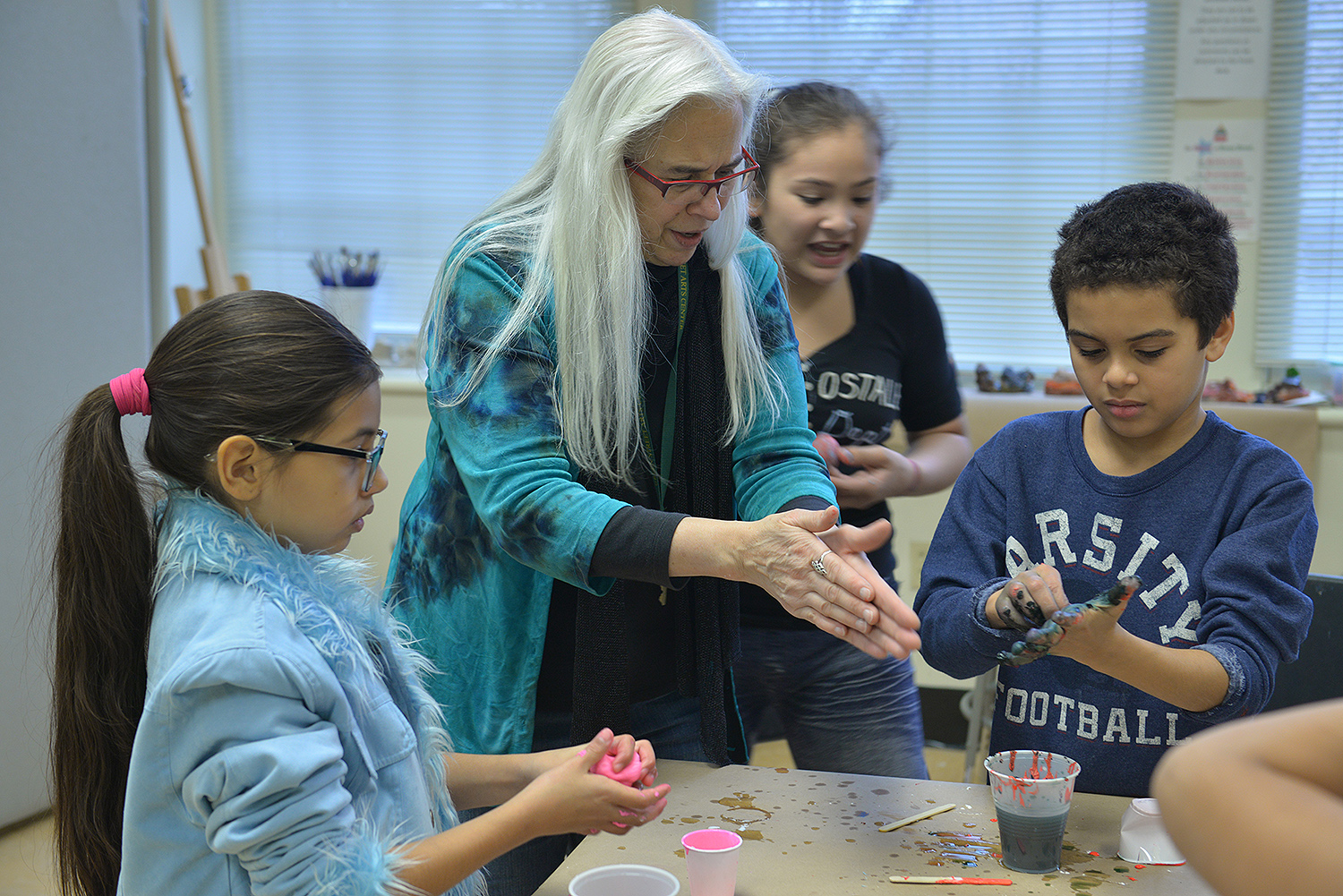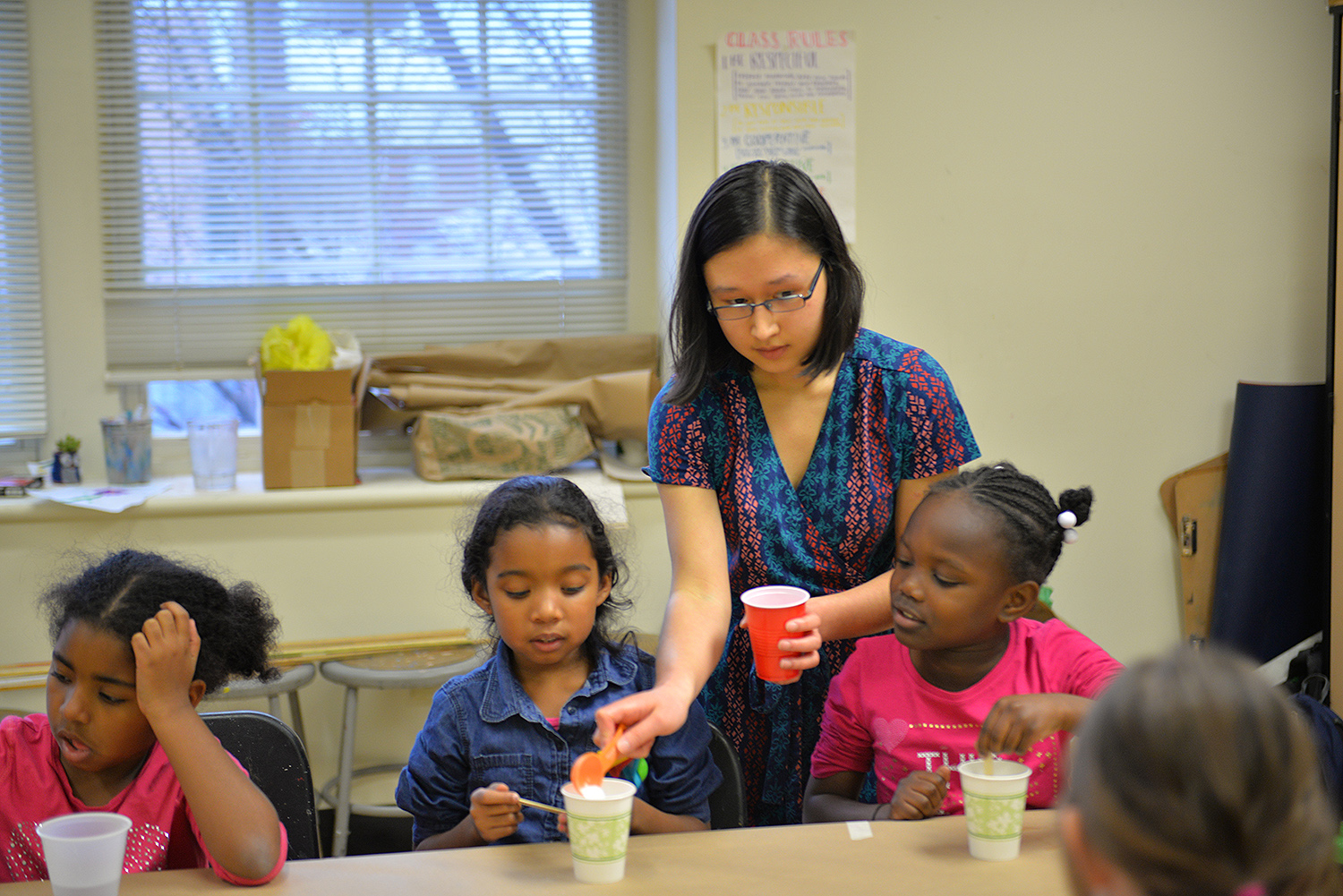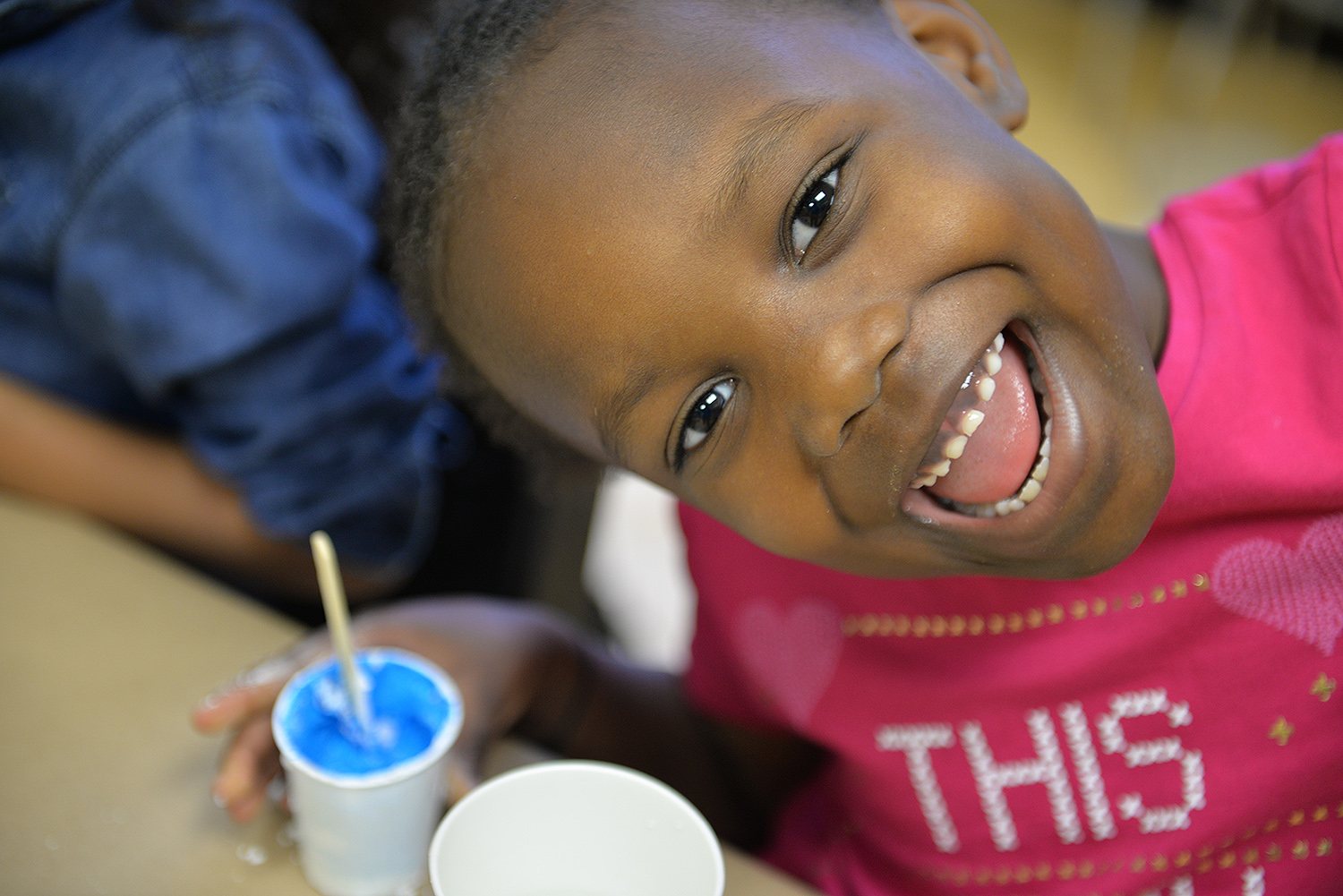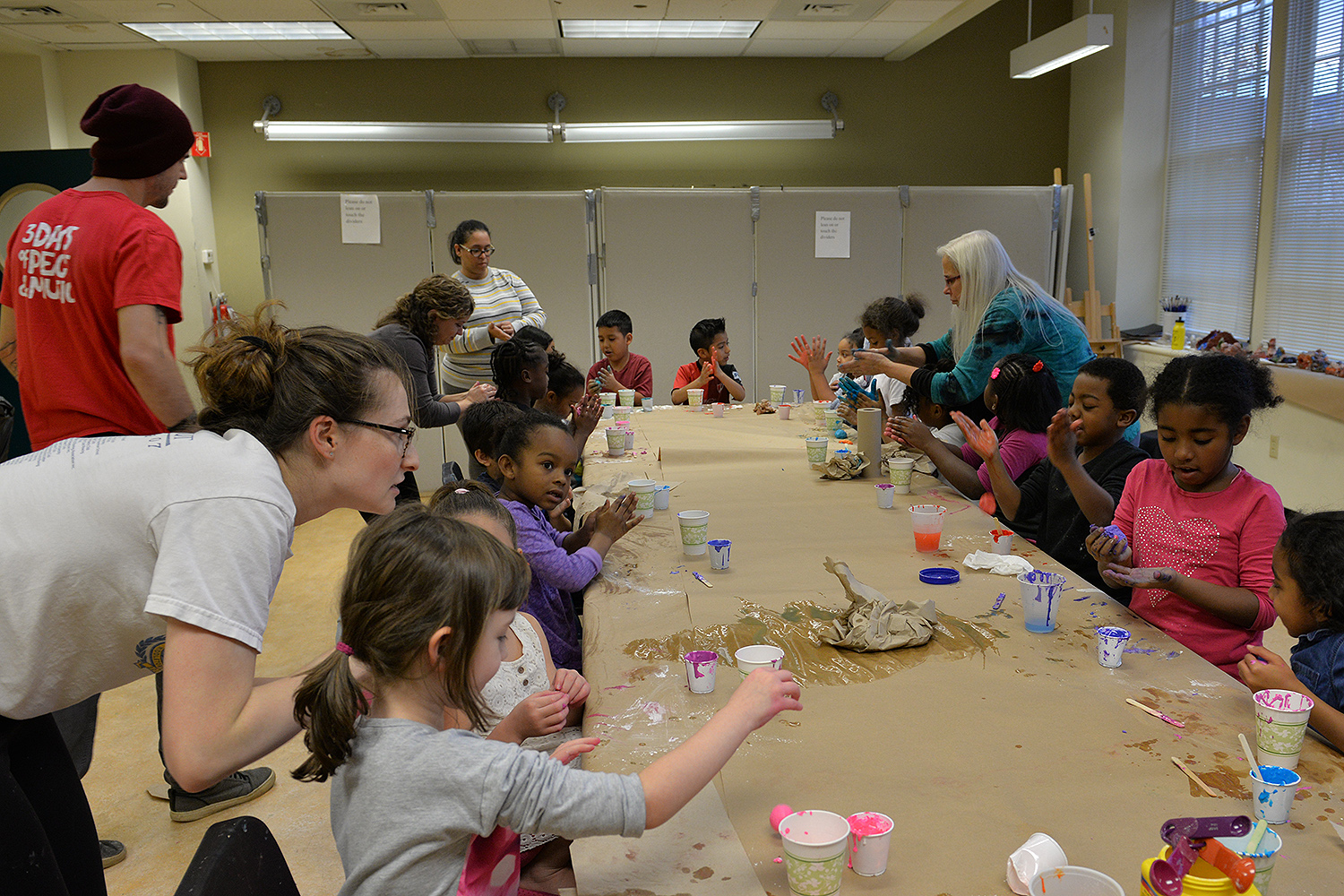Local Children Learn about Physics from Wesleyan Faculty, Students
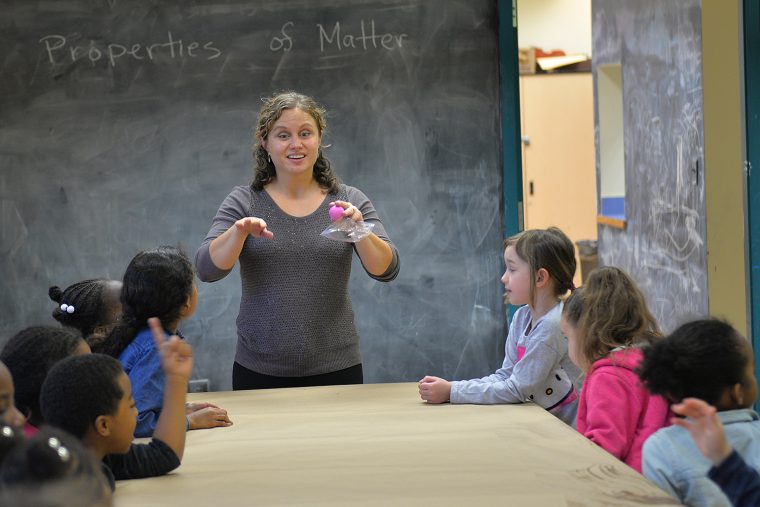
Christina Othon, assistant professor of physics, assistant professor of integrative sciences, met with students enrolled in the Green Street Teaching and Learning Center‘s Discovery AfterSchool Program on Dec. 1. Othon and Wesleyan students Danielle Levinson ’19, Alexis Braunrot ’18 and and graduate student Stefan Kramel taught the AfterSchool attendees about physics through hands-on activities.
GSTLC s a community-based studio that develops, applies, and disseminates best practices in experiential teaching and learning which enhance Wesleyan and the greater community. The Discovery AfterSchool Programs offers a range of classes in the arts, sciences and math for children in Grades 1- 5.
The objective for the day was to investigate the properties of matter, to review the states of matter, and to discuss some of the ways we can change the properties of matter. Othon’s expertise is in soft matter, and therefore the group focused on fluids, gels and plastic deformation. After reviewing how to define the properties of a liquid, students were asked about how they would characterize some unusual materials like peanut butter or Jell-O.
“Of course these are materials which hold their shape, similar to a solid, but deform under stress or strain like a fluid. We therefore determined that the categories of liquid, gas and solid are not rigid categories, but that some materials have properties of both,” Othon said. “We then conducted some experiments on viscosity where students made predictions about which fluids would flow most quickly down an incline plane. The fluids were water, oil, chocolate sauce, honey and ketchup. The students observed that the ketchup behaved differently than all of the other fluids, and that the clumping of the ketchup dramatically impacted how fast it flowed.”
After investigating viscosity, the group discussed how to change the properties of materials. The students recognized that through temperature they could change water to a solid.
To demonstrate the change in structural properties, Othon and the students decided to make bouncy balls through chemical crosslinking. The students took two fluid solutions (glue and starch, and a salt solution in water), and mixed them to make their own bouncy balls.
“This is a messy project, but is highly engaging and the students greatly enjoyed it,” Othon said. “We always have a lot of fun working with the children at Green Street. We hope that this experience helps makes studying science exciting, and that they realize they can make observations of everyday objects and phenomena in their home.”
(Photos by Rebecca Goldfarb Terry ’19)


